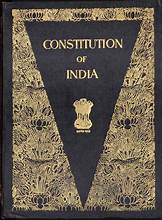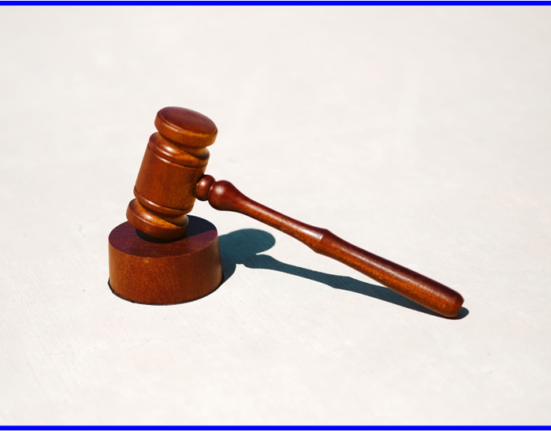Maanya Gupta, a 1st Year student from the University of Warwick has written this Article on “Absolute Liability in Tort Law: Balancing Accountability and Fairness”.
Introduction
The scope of the rule of absolute liability in Tort law is very wide. The definition of tort law states it to be ‘an act or omission that gives rise to injury or harm to another and amounts to a civil wrong for which courts impose liability’.[1] Where liability refers to the state of being legally responsible for an act or lack thereof. One area under tort law that institutes considerable debate is absolute liability. Though based on the principle of no-fault liability, in contrast to both no-fault liability and strict liability, absolute liability holds defendants strictly liable for any harm caused, irrespective of their fault or intention. These liability laws hold individuals accountable for their actions regardless of whether they committed the act or took reasonable measures to prevent any harm. In such cases, individuals can be deemed responsible even in the absence of negligence. This article will discuss the law of no-fault liability and strict liability but ultimately focus on absolute liability, exploring its origin and context, questioning its justification and assessing the implications it may have on society and the legal justice system.
The Origination Of Absolute Liability
The principle of absolute liability evolved in India from the case MC Mehta v. Union of India but to fully understand it let’s first look at no-fault liability and strict liability. Sometimes harm or injury occurs from no direct fault or intention of a person and so when a person is held liable for no fault of his own [2], we call it a no-fault liability. Prior to the year 1868, a legal test was used to determine the guilt of a defendant by establishing whether they had carried out any negligence or fault. If a fault was found, then the defendant was liable for his/her act and/or negligence, but if a fault wasn’t found then the defendant was in the clear and absolved from all liability.[3] However, this test had a lot of issues so was subsequently split into two forms: strict liability and absolute liability.
Strict Liability
Strict liability is a concept applied in both civil and criminal law that holds a defendant responsible for their actions and any consequences that follow regardless of their intent at the time of the action. Within tort law, the principle is primarily used when referring to three key case categories: the ownership of wild animals, the engagement in abnormally dangerous activities and injury due to defective product distribution. [4] There are a few things one must establish in order to attempt to win a strict liability case, first that injury or harm was caused and that it was caused by the defendant’s animal, product or actions. Second that the activity that harmed them was abnormal or unreasonable in the community and ‘created a high risk of foreseeable harm even when using reasonable care.’ [5] Third that the plaintiff did not unnecessarily aggravate the animal or used the product in a proper, reasonable manner and fourth, that there is no evidence of the plaintiff substantially altering the product or influencing the animal beforehand, and it’s the responsibility of the defendant to prove that he/she is not liable for such damages.
Rylands v Fletcher
Strict liability emerged from a case called Rylands v Fletcher (1868) where Fletcher, the defendant, asked an independent contractor to make a reservoir. During construction, the contractor ignored mine shafts present at the scene belonging to Rylands and the finished reservoir resulted in flooding of the shafts. Fletcher claimed to have had no knowledge of the mines and denied responsibility for the flood as he’d given the task to the contractor. This is where the concept of strict liability was introduced. It claims, ‘if a person gets something on his land, which, if on escaping from the land, can cause mischief, he must keep it as his own peril and be answerable for the damages that are the natural consequences of such escape.’ [6] So, what does this mean for Rylands v Fletcher? Although Fletcher may not have known there was a mine under where he was building and his intention was not to destroy the property or cause a flood, by simply constructing a reservoir, a thing that has the potential to cause damage, he claims full liability for all and any harm it effects due to natural causes.
MC Mehta v Union of India
Then in 1985 came the Delhi case of the Oleum Gas Leakage from Shriram Food and Fertilisers Ltd. Also known as the MC Mehta v Union of India case which played an instrumental role in environmental advocacy and resulted in the creation of the principle of absolute liability. Shriram Food and Fertilisers Ltd. was a privately owned fertiliser plant, whose factory’s chemical processes resulted in hazardous substances leaking out causing harm to the surrounding public. MC Mehta, also known as India’s green lawyer, a public interest attorney filed a petition to the Supreme Court seeking the closure and relocation of the factory’s plants. Soon after, the Oleum Gas Leak incident occurred causing severe harm to those who inhaled the gas, and causing the factory to collapse. As per sub-section (1) of Section 133, the Magistrate ordered Shriram Food and Fertilisers Ltd. to shut down all manufacturing of lethal substances. [7]As a result of this case, the Supreme Court of India created the ‘Absolute Liability Principle’ The court stated that for any and all companies, businesses, corporations etc that engage in inherently dangerous activities, the law of absolute liability will be applied, and they will take full ownership with no exception. This causes employers, employees and workmen to take all necessary precautions and strictly follow guidelines when working in such industries and minimise any possible risk of harm as all liability falls upon them.
The Importance Of The Case
This case was the key shift from strict liability to absolute liability as strict liability had several defences and exceptions which the replacing absolute liability principle does not have, the court considered strict liability insufficient to fully protect citizen’s rights. As technology and industrialisation continue to progress, the proliferation of hazardous substances and gases has surged, presenting a heightened peril to the environment and mankind emphasising the importance of this principle. This case was vital and historic in Indian Law and the legal system as a whole as it was the first time the Supreme Court had ever held a company fully liable for a gas leakage, without subject to any exceptions, irrespective of its defence and claimed loss. [8]
Definition of Absolute Liability
There are four key conditions that must be fulfilled for the absolute liability principle to be applied, these are strictly essential elements as the whole fundamental of absolute liability is it has no exceptions. The first is that the object, substance or material in question must be inherently dangerous or have the power to be potentially destructive and be under the control of a man or woman, someone to hold responsibility for it. The second states the dangerous substance must escape in order to cause harm or damage. Thirdly, the land must be being used in a non-natural manner and fourthly, the plaintiff must be able to demonstrate that it was the stated dangerous material that escaped and caused the stated damages. If all of these conditions are satisfied, there are no available defences for absolute liability.
Defences
Under absolute liability, defendants bear full responsibility without any available defences. They must compensate victims for the harm caused, taking into account the wrongdoer’s capability and physical responsibility. Unlike strict liability, where compensation was based on objective damage assessment and repair costs, absolute liability considers the company’s capacity to prevent harm and its financial feasibility to pay. Willful neglect and carelessness result in higher compensation than accidental damage, regardless of intentions. In absolute liability cases, the focus shifts from objective damage to the wrongdoer’s ability to prevent harm and fulfil compensation obligations.
Strict liability, however, had defences, there were 5 primary defences that could be used to argue lack of liability, the key ones are as follows and how they relate to absolute liability:
Act of God.
This defence includes supernatural occurrences or natural disasters, events that occur with no human intervention beyond our foresight, cases such as Rylands v Fletcher [9] and Nichols v Marsland [10] utilised it and explained that in these situations no one can be held liable for the damage caused. [11]
In absolute liability however, though supernatural occurrences are still not human fault, it is the obligation of the company or organisation to account for or accept their chances of unforeseeable events and understand legally they are still liable for any damage caused.
Act of a Third Party
This defence is similar to the Act of God, it states that if the damage or harm in question was caused by the act of a third party, separate from both the plaintiff and defendant, over whom the defendant has no control, then the principle of strict liability shall not apply. [12] However, if this act by a third party could have been foreseen and prevented by the defendant and the defendant failed to do so, the liability principle still stands, and responsibility is back on the defendant.
The justifiability of absolute liability comes into question when third-party involvement is intentional or malicious, and the defendant is entirely unaware. In such cases, holding the defendant fully liable may be debated. Additionally, instances where the plaintiff collaborates with a third party for insurance claims or sabotage further complicate the matter. It becomes essential to determine fairness in applying absolute liability, especially when evidence is lacking, and the burden falls unjustly on the defendant. While absolute liability is warranted when the defendant’s actions could have prevented the third-party involvement, situations involving intentional harm or insufficient evidence raise concerns about its applicability.
Fault of the Plaintiff
The defence in Ponting v. Noakes states that strict liability cannot apply if the damage results from the plaintiff’s actions or negligence. In this case, the plaintiff’s horse trespassed onto the defendant’s property and consumed poisonous leaves, leading to illness. Although the leaves were inherently dangerous, the defendant did not meet the other conditions of strict liability: the leaves did not escape, the defendant did not use the land unnaturally, and the plaintiff failed to show that the leaves caused harm. The court ruled in favor of the defendant, holding the plaintiff responsible for allowing his horse to trespass, thus absolving the defendant of liability.
Linking to absolute liability, we can see if the necessary conditions are satisfied. The first is, as mentioned above, the leaves were technically inherently dangerous and under the control of a man or woman. But once again, the second condition is failed as the dangerous substance did not escape to cause harm or damage, so the liability would again fall upon the plaintiff, not the defendant.
Consent of the Plaintiff
So, what if the poisonous leaves plant hung over the fence into the plaintiff’s garden and then the horse ate them, in this new scenario he’s no longer trespassing as he’s on his own land and technically the leaves have ‘escaped’ or crossed a boundary. Well, the defence against strict liability states that if the plaintiff has consented to the accumulation of a dangerous thing on this own or the defendant’s land, then he cannot complain about the consequences. So, if previously the plaintiff had consented and agreed to the poisonous leaves hanging over to his side of the fence then he cannot put liability for his horse eating them on the defendant.
Consent
Liability would still rest with the defendant, regardless of the plaintiff’s consent. For instance, in a case involving poisonous leaves, even if the plaintiff should have been more cautious, the defendant remains responsible. Full and extensive consent is crucial. If a plaintiff consents to parcels for their neighbour without knowing the contents, liability depends on the nature of the item. The defendant may still be held liable, whether it’s a leaking carton of juice or a dangerous bomb. As the law evolves, authorities constantly review principles and raise questions about checking package contents before acceptance.
Conclusion
In conclusion, the principle of absolute liability represents a distinct approach within tort law, it aims to balance the interests of plaintiffs, defendants, and society as a whole. Absolute liability, while providing a means for plaintiffs to seek and gain compensation for their damage or injury without the burden of proving fault, raises certain concerns regarding fairness, causation, and the potential for its abuse. By ensuring a strong balance between absolute liability, relevant, objective defences, and regulatory oversight, legal systems can ensure accountability while maintaining fairness and proportionality. A focused, practical approach to the principle of absolute liability can contribute to a just, renowned and efficient tort legal system that appropriately protects victims and decreases the frequency of negligence and mishaps incentivising without unduly burdening defendants.
To read related articles click here
Bibliography
- Anon., ‘tort’, Legal Information Institute, Cornell Law School, https://www.law.cornell.edu/wex/tort
- M. Seal, ‘No-Fault Liability’, The Legal Vidya, 2021 https://www.thelegalvidya.in/no-fault-liability
- Aanesmesh.2717, ‘How Absolute Liability got Evolved?’, Legal Service India E-Journal, https://www.legalserviceindia.com/legal/article-2435-how-absolute-liability-got-evolved.html#:~:text=The%20rule%20of%20absolute%20liability,Mehta%20v%20Union%20of%20India
- Anon., ‘What is Strict Liability?’, Hasner, Injury Law Firm, https://www.hasnerlaw.com/atlanta-personal-injury-resources/what-is-strict-liability/
- ibid
- R. Mohapatra, ‘Notes on Tort Law – Strict Liability’, Clatalogue, 2023 https://lawctopus.com/clatalogue/clat-ug/tort-law-strict-liability-for-clat/
- N. Dhyani, ‘MC Mehta vs Union of India’, Byju’s Exam Prep, 2023 https://byjusexamprep.com/current-affairs/mc-mehta-vs-union-of-india
- P. Bhagwati, ‘M.C. Mehta And Anr vs Union Of India & Ors on 20 December 1986’, Indiankanoon, 1986 https://indiankanoon.org/doc/1486949/
- Anon., ‘Rylands v Fletcher Case Summary’, LawTeacher.net, 2021 https://www.lawteacher.net/cases/rylands-v-fletcher.php
- Anon., ‘Nichols v Marsland’, Court of Appeal, Ispa Loquitur, 1876, 2 Ex D 1. https://ipsaloquitur.com/tort-law/cases/nichols-v-marsland/
- R. Mohapatra, op. cit. (6)
- Anon., ‘strict liability in tort law’, Strict Liability Torts and Contract Liability, Hall Ellis Solicitors https://hallellis.co.uk/strict-liability/
[1] Anon., ‘tort’, Legal Information Institute, Cornell Law School
[2] M. Seal, ‘No-Fault Liability’, The Legal Vidya, 2021
[3] Aanesmesh.2717, ‘How Absolute Liability got Evolved?’, Legal Service India E-Journal
[4] Anon., ‘What is Strict Liability?’, Hasner, Injury Law Firm
[5] ibid
[6] R. Mohapatra, ‘Notes on Tort Law – Strict Liability’, Clatalogue, 2023
[7] N. Dhyani, ‘MC Mehta vs Union of India’, Byju’s Exam Prep, 2023
[8] P. Bhagwati, ‘M.C. Mehta And Anr vs Union Of India & Ors on 20 December, 1986’, Indiankanoon, 1986
[9] Anon., ‘Rylands v Fletcher Case Summary’, LawTeacher.net, 2021
[10] Anon., ‘Nichols v Marsland’, Court of Appeal, Ispa Loquitur, 1876, 2 Ex D 1.
[11] R. Mohapatra, op. cit.
[12] Anon., ‘strict liability in tort law’, Strict Liability Torts and Contract Liability, Hall Ellis Solicitors







Leave feedback about this